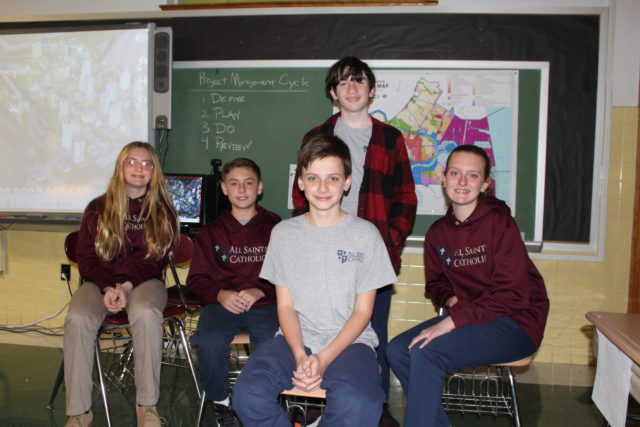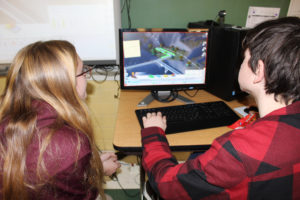
ELSMERE — If you’re looking for an idea of what your city might look like 150 years from now, turn your attention to All Saints Catholic School. There, the Future City team is busy working on a sustainable model for the future.
Ten students — nine in sixth and seventh grades, one in eighth — have been gathering a few times each week to plan a city 150 years into the future. Future City has the same premise each year, which is to zone and plan a metropolis while working within budget and zoning constraints, said Susan Small, the information technology director at All Saints and club moderator. There is a different challenge each time, however.
“We’re looking for a solution to deliver safe drinking water,” she said.

The students need to imagine problems 150 years from now, which means a lot of research into possibilities and solutions. Those problems could involve transportation, housing, climate and other factors.
“In Future City, they learn the engineering design process and the project management cycle. They learn how the two work together,” Small said.
The students have to stick to those models so they see how those work. They also get visits from a professional engineer and a city planner, she added.
One of the big issues today locally could be an impediment in the future, she said. In Delaware, there are problems with per- and polyfluoroalkyl substances, of PFAs, which are in the chemicals used in making Teflon. The Dupont Co. made Teflon in Seaford for decades, and PFAs are what made the substance not stick.
“PFAs are what make things water-resistant. They run off into our drinking water. That is currently an issue,” Small said.
Nick Tokarski, the eighth-grader on the team, said their city is in southern Japan in the same region as Nagano. The city is named Sorabyu.
“We, from the start, wanted to build our city around clean energy because clean energy usually goes hand in hand with clean water. We decided to build our city around solar energy and wind energy,” Nick said.
Solar energy would be easier to obtain in a mountainous region such as the one where Sorabyu is located, he explained. Sorabyu translates to “solar view.”
Zoe Heidingsfelder, a sixth-grader, said she joined Future City “to see what it would be like. I just like it.” Despite that, she said she doesn’t see this in her own future.
One future problem looks an awful lot like a current one: money. Seventh-grader Charlie Brecht, who is working on the team’s presentation as well as the city itself, said it’s hard to balance the budget.
“Keeping up with what everyone wanted while still building the city — education, police — those all take, they take some of the city’s money. It’s hard to sustain all that.”
Nick agreed that the budget is the biggest constraint. “I don’t know what made it spike so high.”
A few of the students said they joined because Future City will look good when they apply to high schools. Cameron Hertzell, a seventh-grader, said she welcomed the challenge.
“It’s difficult, but it’s fun to spend time with your friends and do something that you haven’t done before,” she said. She’s working on a lot of the writing involved with the project. She has an interest in engineering, “but I like writing better.”
Future City is part of a competition, which started in October. The All Saints crew will compete in an area event at Archbishop Carroll High School in Radnor, Pa., on Jan. 16. Regardless of their level of interest in engineering and design, the students will benefit from their participation Small said.
“I think they’re enjoying it. It’s hands-on learning. Project-based learning, which I think is more fun than when we were in school,” she said.






